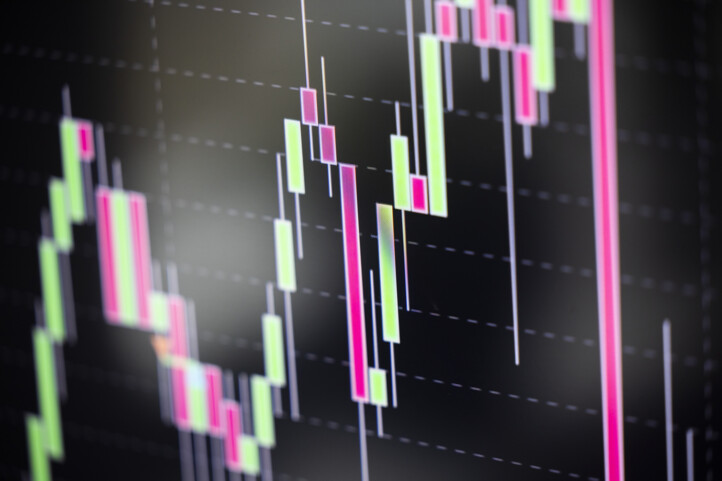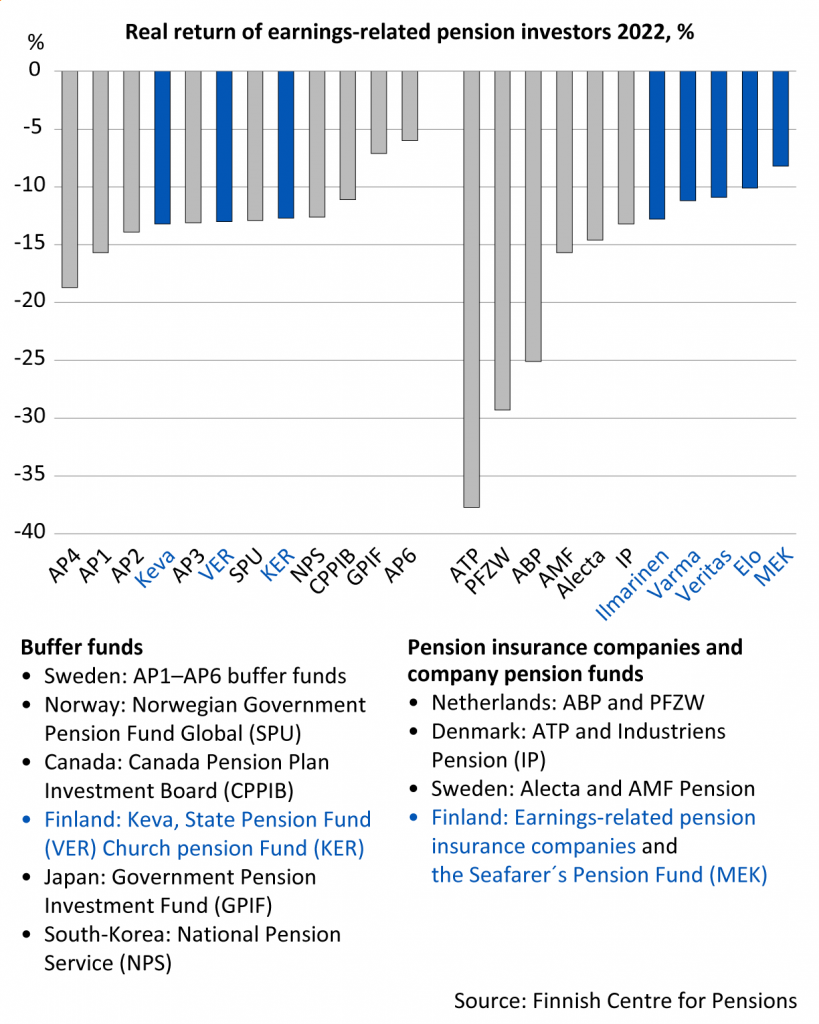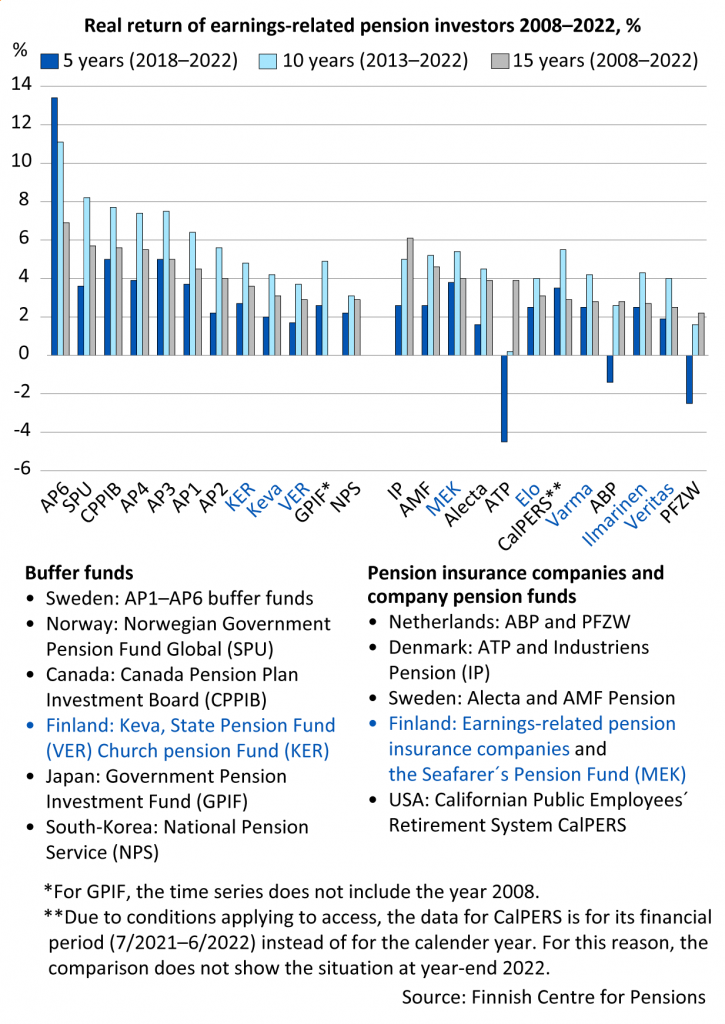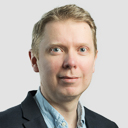International comparison of investment return: Worst investment year since the financial crisis

The average nominal return of the pension funds included in our comparison was more than eight per cent in the negative in 2022. The real return is even weaker since inflation pushed losses deeper in the red in all countries. The average real return was nearly –15 per cent. However, Finnish earnings-related pension investors performed above average.
Pension investors in most countries saw exceptionally low investment returns last year. When 2021 was a favourable year for pension investors, 2022 was the worst since the 2008 financial crisis.
The average nominal return was –8.4 per cent and the real return –14.7 per cent. The average real return of pension investors in 2008 was –15.7 per cent. These figures are evident from the international comparison of investment return of the Finnish Centre for Pensions.
“Russia’s war in Ukraine, high inflation and the rapidly tightening monetary policy of central banks darkened the economic outlook and hammered pension investors both in the stock and the interest rate markets”, explains Liaison Manager Mika Vidlund (Finnish Centre for Pensions).
This time, the Finnish pension investors performed above average in the international comparison. Their average real return in 2022 was –11.5 per cent. Among the top five investors, as many as three were Finnish: Seafarers’ Pension Fund, Elo Mutual Pension Insurance Company and Veritas Pension Insurance Company Ltd. Yet not one of them reached a positive real return.
The investor that reached the top result was the Swedish buffer fund AP6, but it also showed a negative real return. Specialising in unlisted companies, the real return of AP6 was –6 per cent.
Danish and Dutch pension investors hit hardest
Our international comparison of investment return showed that the Danish ATP and the Dutch ABP and PFZW suffered the largest investment losses in 2022.
“The crash of ATP stands out in particular since, before the pandemic, it was known for its favourable investment returns. ATP’s struggles are underlined by the fact that it showed the worst result also last year in our comparison”, Vidlund states. The real return of ATP, whose investment portfolio consisted mainly of long-term interest-bearing securities, was nearly -38 per cent in 2022. Similarly, the real return of ABP and PFZW, both of which focus on interest-bearing securities, was –25 and –29 per cent respectively. The real return of the equity-based Norwegian Government Pension Fund Global was –13 per cent. On the other hand, its result improved by the weakening Norwegian krone in relation to the big currencies.

Long-term bonds may not mature until after several decades, and their coupon rate is usually fixed. When interest rates rise in the bond market, the value of long-term bonds decreases.
However, in many countries, the poor results on the bond markets and the shrinking investment assets of pension investors are compensated by nearly equally high reductions in pension liabilities. That means that the pension investors’ solvency is not compromised as a result of a single weak investment year. In other words, there are enough assets to cover the pension liabilities. This information has been used to reassure Danish and Dutch citizens.
Long-term return in the positive
Although 2022 was tough on pension investors, the long-term real return has not suffered from the poor investment year.
“The very harsh investment year of 2022 has affected, in particular, the average five-year return which, for some actors, fell into the negative. Long term, however, the return has remained at a moderate level”, says Special Adviser Antti Mielonen (Finnish Centre for Pensions).
He states that the real return of earnings-related pension insurance companies and industry-wide pension funds over a period of 15 years is around 3.5 per cent. The highest real return was generated by the Danish Industriens Pension (IP): 6.1 per cent. The highest return of the Finnish pension investors was generated by the Seafarer’s Pension Fund (MEK): 4 per cent.
Of the buffer funds, the top performer in the comparison over a 15-year period is AP6 with a real return of nearly 7 per cent. The Church Pension Fund (KER) has the highest real return (3.6%) of the Finnish buffer funds. The average real return of buffer funds is 4.5 per cent. “Investing pension assets is a long-term activity. That’s why we have now added a return comparison of a period spanning 15 years. Depending on the allocation of the investment portfolio and other factors, the fluctuation in returns may be large from one year to another, which is why short-term returns may be unduly emphasized from the point of view of pension investing”, Mielonen points out.

24 pension investors from 9 countries
The international comparison of investment returns made by the Finnish Centre for Pensions includes 24 pension investors from nine countries. The comparison includes large investors from northern Europe, North America and Asia. The comparison includes eight pension investors from Finland.
The earnings-related pension investors are divided into two groups in the comparison based on their risk bearing capacity: those that are bound by solvency regulations (earnings-related pension providers and industry-wide pension funds) and those that are not (buffer funds). Real returns are reviewed over a one-year, a five-year, a ten-year and a fifteen-year period.
Boundary conditions for comparison of investment returns
- Starting year and length of comparison period affect the results. Substantial annual fluctuation in returns. Long-term average returns depend on the selected period.
- Currency region and exchange rate fluctuations cause differences in results. Returns expressed in national currency (that is, in the same currency as that in which the pensions are paid).
- Investment operations take place within the solvency framework and other regulations limiting investment risks.
- Real returns provide better comparability of long-term investment returns as the effect of inflation is removed.
Read more
Illustration: Karoliina Paatos

